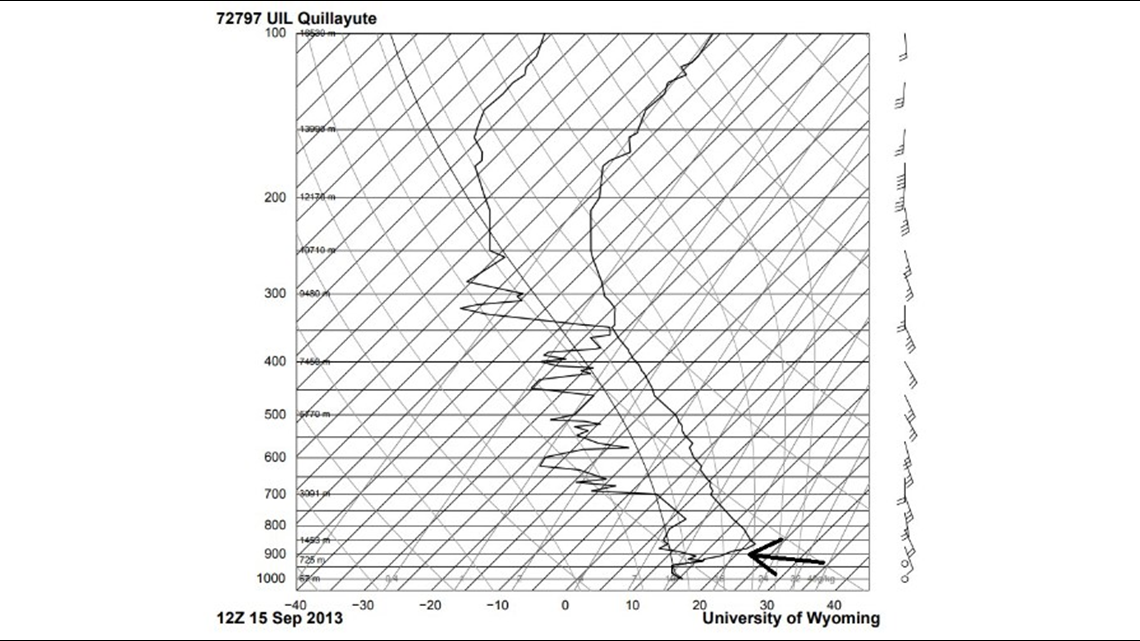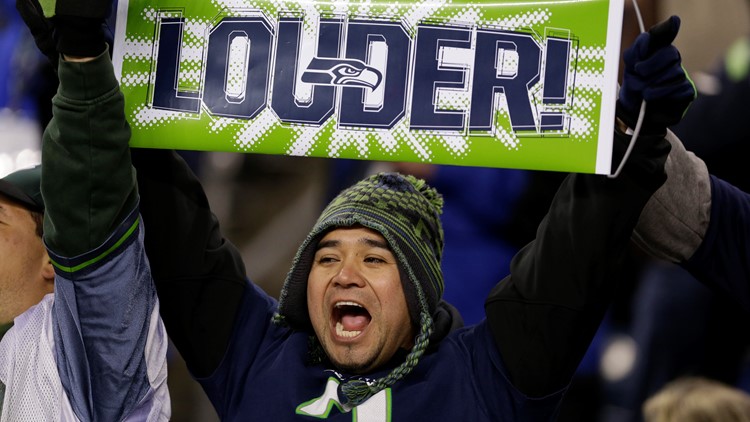When the Seahawks take the field in Seattle, CenturyLink Field can be one of the loudest stadiums in the country. But on certain days, sound seems to be louder on the field than other days. And our Pacific Northwest weather is one reason why.
It all has to do with temperature inversions. Normally, the air gets cooler as you go higher, but when there's an inversion in place, a layer of warm air sits above a layer of cool air near the ground. At the surface, it can be cool, damp, and cloudy. But above the inversion, it's usually much warmer and sunny.
This tends to happen a lot during the winter months when the sun's energy is lower.
But how does this affect sound? It has to do with the refraction, or bending of sound waves, and how fast they're moving. The speed of a sound wave depends on the properties of what that sound wave is traveling through. When a sound wave encounters changes in air temperature, the wave's speed and direction changes.
On days with an inversion when temperatures increase the higher you go, the speed of sound also increases with height. That leaves sound waves closer to the ground moving slower. As a result, the sound waves bend downward reflecting the noise all around the stadium.
This downward bending of sound waves makes it sound louder – a definite home-field advantage on game day.
Back when the original sound record at CenturyLink Field was broken on September 15, 2013, there was a solid temperature inversion in place.
This picture is what’s known as a “skew-t” diagram. Meteorologists use them to see what conditions are like in the upper atmosphere. A weather balloon is launched twice a day at select National Weather Service offices – in this example at Quillayute, Wash.


In the picture where the arrow is pointing, it shows temperature rapidly rising with height, which is a temperature inversion.
In Quillayute during the morning of September 15, at the surface, the temperature was 60 degrees. About 4,000 feet higher, the temperature was 70 degrees. Similar conditions were likely felt near Seattle.
Therefore a temperature inversion may have helped make CenturyLink Field one of the loudest stadiums in the world.



